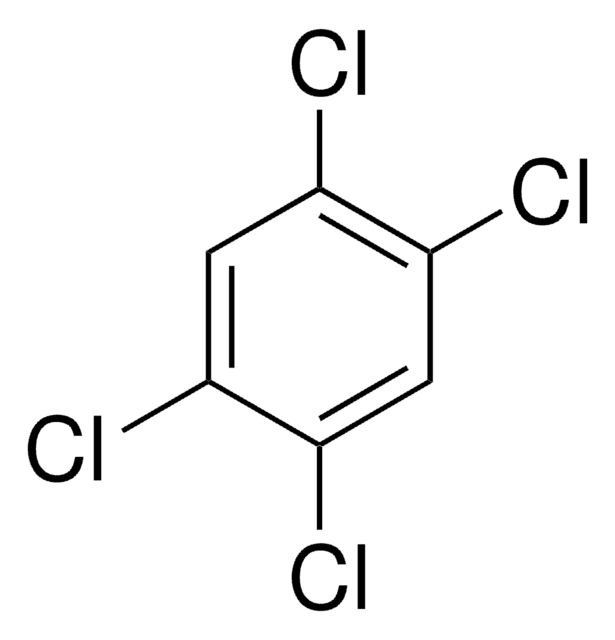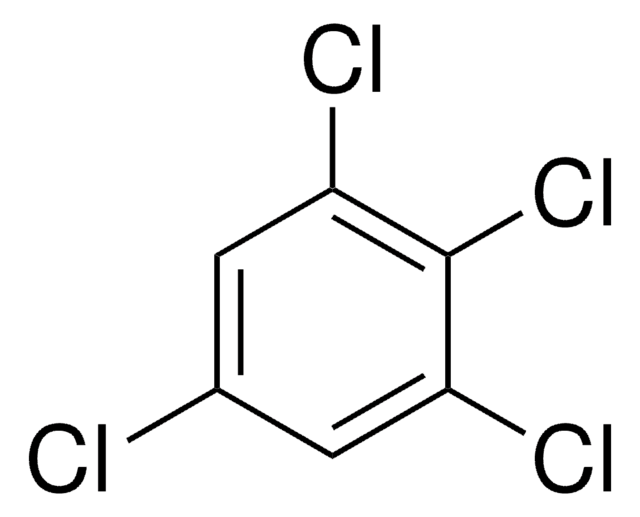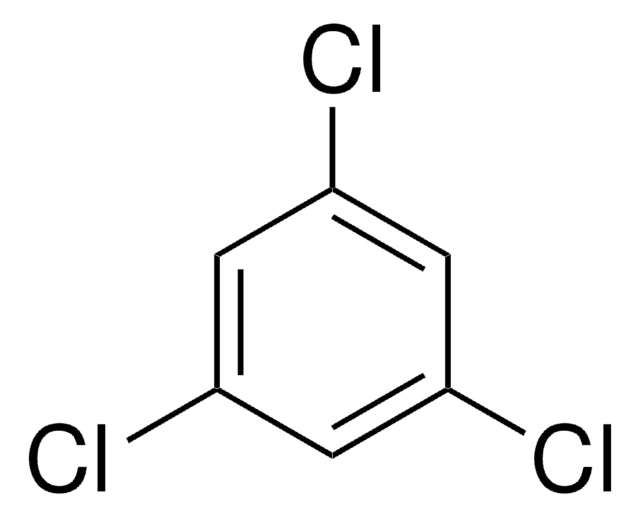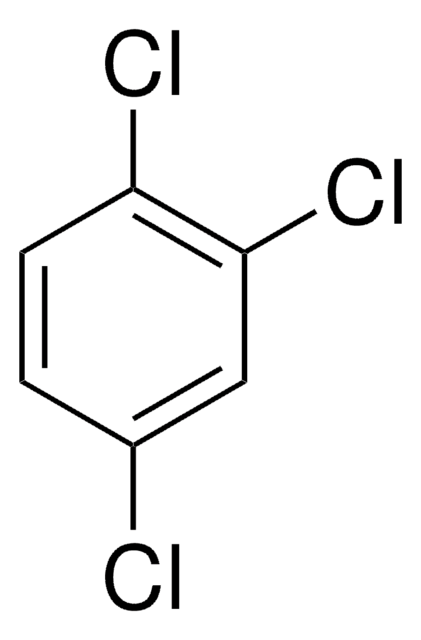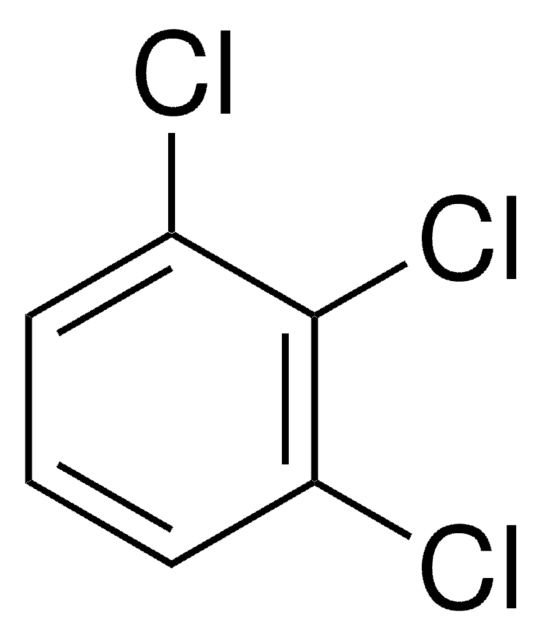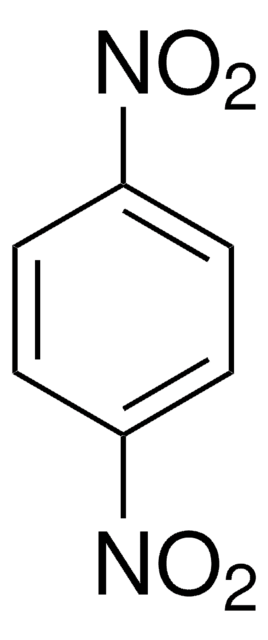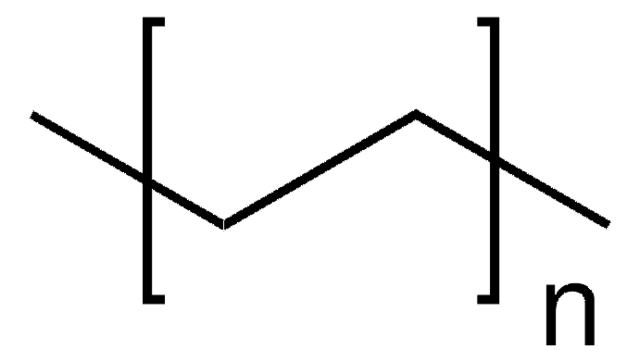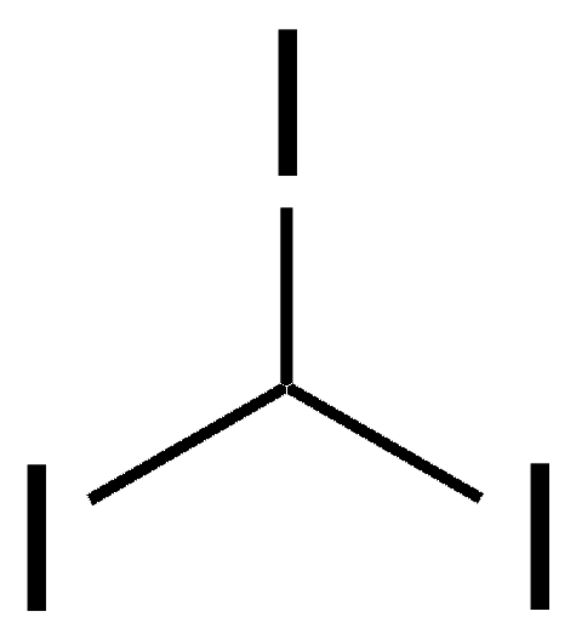Alle Fotos(2)
Wichtige Dokumente
131849
1,2,3,4-Tetrachlorbenzol
98%
Anmeldenzur Ansicht organisationsspezifischer und vertraglich vereinbarter Preise
Alle Fotos(2)
About This Item
Empirische Formel (Hill-System):
C6H2Cl4
CAS-Nummer:
Molekulargewicht:
215.89
Beilstein:
1910025
EG-Nummer:
MDL-Nummer:
UNSPSC-Code:
12352100
PubChem Substanz-ID:
NACRES:
NA.22
Empfohlene Produkte
Assay
98%
Form
chunks
bp
254 °C/761 mmHg (lit.)
mp (Schmelzpunkt)
42-47 °C (lit.)
Funktionelle Gruppe
chloro
SMILES String
Clc1ccc(Cl)c(Cl)c1Cl
InChI
1S/C6H2Cl4/c7-3-1-2-4(8)6(10)5(3)9/h1-2H
InChIKey
GBDZXPJXOMHESU-UHFFFAOYSA-N
Suchen Sie nach ähnlichen Produkten? Aufrufen Leitfaden zum Produktvergleich
Verwandte Kategorien
Anwendung
1,2,3,4-tetrachlorobenzene was used as a model compound to determine the chlorobenzenes (CBs) in soil samples. It was also used for rapid dechlorination of 1,2,3,4-tetrachlorodibenzo-p-dioxin (1,2,3,4-TeCDD).
Signalwort
Warning
H-Sätze
Gefahreneinstufungen
Acute Tox. 4 Oral - Aquatic Acute 1 - Aquatic Chronic 1
Lagerklassenschlüssel
11 - Combustible Solids
WGK
WGK 3
Flammpunkt (°F)
235.4 °F - closed cup
Flammpunkt (°C)
113 °C - closed cup
Persönliche Schutzausrüstung
dust mask type N95 (US), Eyeshields, Gloves
Hier finden Sie alle aktuellen Versionen:
Besitzen Sie dieses Produkt bereits?
In der Dokumentenbibliothek finden Sie die Dokumentation zu den Produkten, die Sie kürzlich erworben haben.
Young-Beom Ahn et al.
FEMS microbiology ecology, 66(2), 271-281 (2008-07-22)
Dechlorination of spiked 1,2,3,4-tetrachlorodibenzo-p-dioxin (1,2,3,4-TeCDD) was investigated in sediment microcosms from three polychlorinated dibenzo-p-dioxin and dibenzofuran (CDD/F)-contaminated sites: River Kymijoki, Finland; Gulf Island Pond, Maine; and Lake Roosevelt, Washington. Dechlorination was stimulated by addition of electron donor and halogenated priming
Li Wang et al.
Journal of chromatography. A, 1256, 9-14 (2012-08-15)
A novel and simple analytical method for the determination of chlorobenzenes (CBs) in soil samples was developed using ultrasonic-assisted water extraction (UAWE) coupled with solvent bar microextraction (SBME). Four chlorobenzenes, 1,2,3-trichlorobenzene (1,2,3-TCB), 1,2,3,4-tetrachlorobenzene (1,2,3,4-TeCB), hexachlorobenzene (HCB), and 1-chloro-4-nitrobenzene (1-C-4-NB), were
Ken G Drouillard et al.
Bulletin of environmental contamination and toxicology, 93(5), 561-566 (2014-06-18)
A vial equilibration technique was used to estimate the fugacity capacities of food and feces samples for 1,2,3,4-tetrachlorobenzene (TCB). The method was calibrated using different volumes of n-octanol and by comparing the measured and predicted fugacity capacity (Zoct) of n-octanol
Kenichiro Inoue et al.
Environmental science & technology, 39(15), 5844-5850 (2005-08-30)
Carbonaceous adsorbents such as activated carbon have been used to reduce the emission of organic pollutants from incineration plants. However, with this method, the amount and type of adsorbent to be used are based only on empirical results, which may
B A Kimball et al.
Journal of wildlife diseases, 32(3), 505-511 (1996-07-01)
Pentachlorobenzene (PeCB) and 1,2,3,4-tetrachlorobenzene (TeCB) were evaluated as oral chemical biomarkers when administered to coyotes (Canis latrans) during the period of 31 January to 10 August 1994. Three coyotes each received 100 mg of PeCB and three received 100 mg
Unser Team von Wissenschaftlern verfügt über Erfahrung in allen Forschungsbereichen einschließlich Life Science, Materialwissenschaften, chemischer Synthese, Chromatographie, Analytik und vielen mehr..
Setzen Sie sich mit dem technischen Dienst in Verbindung.